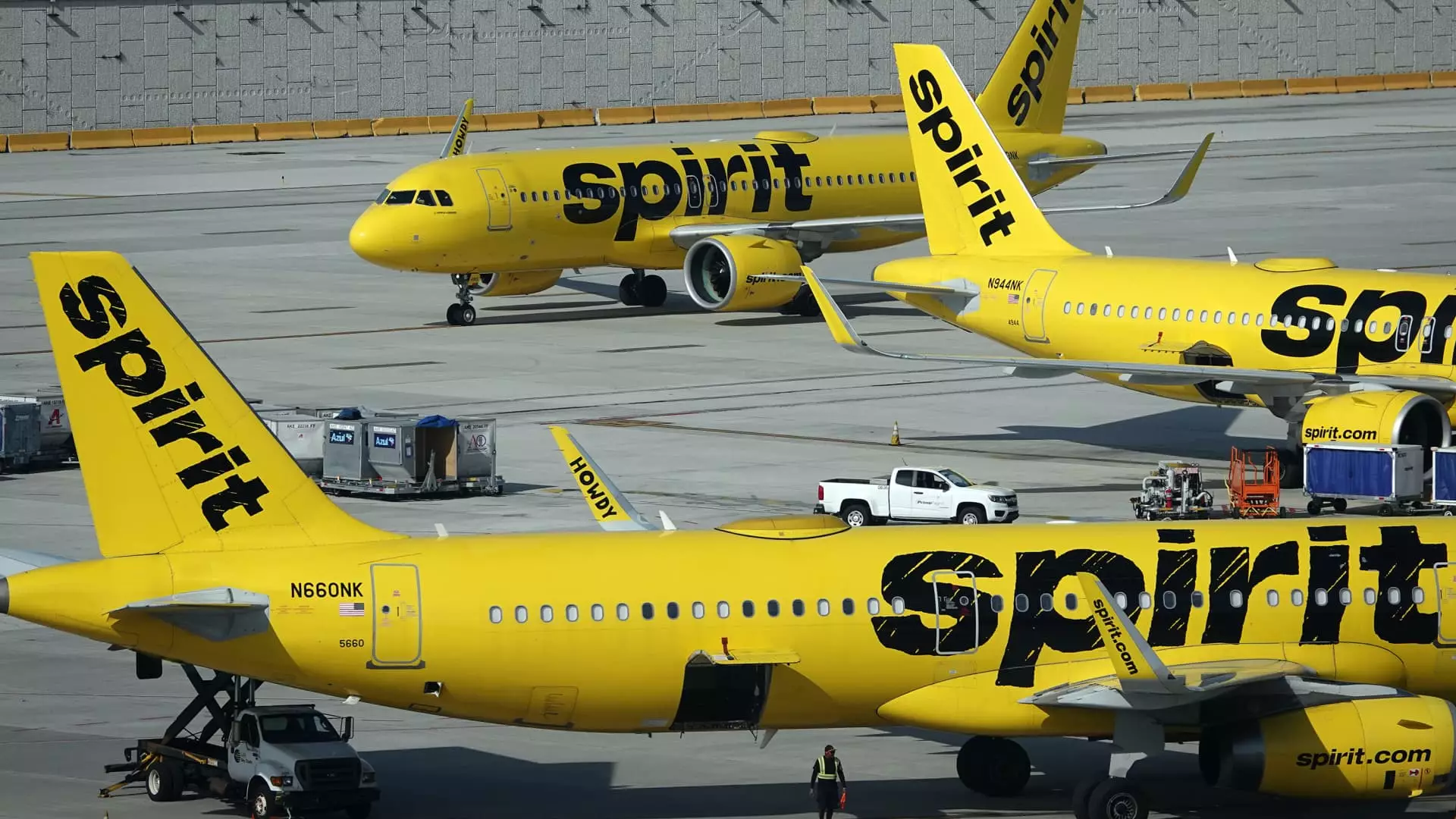Spirit Airlines, a key player in the budget airline market, has recently unveiled strategic decisions aimed at reviving its struggling operations. Following a turbulent period marked by significant share declines—over 80% this year alone—the airline has taken steps that signal both desperation and hope. The company’s most significant moves include the sale of 23 older Airbus aircraft and plans to reduce its workforce, actions intended to slash costs and generate necessary cash flow.
In a recent securities filing, Spirit Airlines reported that the sale of these aircraft is expected to yield approximately $519 million. This move reflects a broader strategy to liquidate older assets in a climate of financial strain. Additionally, the airline has targeted a cost reduction of about $80 million, primarily through job cuts, which indicates a critical need to streamline operations amidst plummeting revenue figures. Just last week, Spirit delayed a vital deadline for refinancing over $1 billion in debt until late December, granting the airline additional time to navigate its turbulent financial waters.
The ongoing impact of the COVID-19 pandemic has forced Spirit to reevaluate its operational blueprint, prompting a reevaluation of travel demand and the grounding of several Pratt & Whitney powered aircraft. Despite a recent surge in stock price following these announcements, the future remains uncertain for the beleaguered airline.
Spirit did not specify the exact number of employees facing layoffs; however, it has hinted at a significant shift for its operational capacity in 2025, projecting a drop in the mid-teens compared to 2023. The airline has already begun furloughing approximately 200 pilots, reflecting a dire situation for its workforce. Interestingly, the flight attendants appear somewhat insulated from job losses, as many opted for voluntary leaves of absence to cope with the shifting demand landscape.
This repositioning of staff and resources illustrates the airline’s attempt to adapt to the new normal while retaining some level of operational viability. The overall goal seems to be a significant reduction in both capacity and expenditures, with the hope that such a drastic approach will yield long-term stability for the carrier.
In a climate of potential alliances, the revival of merger discussions between Spirit and Frontier Airlines has added an intriguing twist to the airline’s narrative. These conversations are particularly noteworthy given that a previous merger agreement was disrupted by JetBlue’s aggressive acquisition proposal in April 2022. While neither airline has commented publicly on the status of these discussions, the prospect of a merger could realign market dynamics and offer Spirit new paths to recovery.
Wednesday’s report from The Wall Street Journal highlighted renewed interest in collaboration within the budget airline space, a move that might be critical for Spirit if it hopes to reclaim its position in a highly competitive market.
Spirit Airlines is currently navigating a challenging landscape defined by financial distress and operational restructuring. While its recent announcements signal an awareness of the gravity of its situation, the effectiveness of its strategies will ultimately determine whether it can emerge from this crisis.

